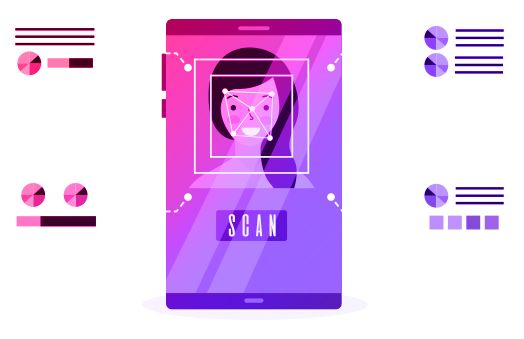Understanding Liveness Verification and Liveness Detection: Enhancing Digital Security

Enhancing Digital Security Strong safety precautions are more important nowadays in the age of technology. As more and more people and businesses conduct multiple activities and interactions. Through online mediums, verifying user identity and avoiding crime have taken precedence. Liveness detection and liveness verification are two vital innovations in this endeavor. This blog examines these ideas, their significance for secure surfing, and how they improve communication.
What is Liveness Verification?
The innovation known as “liveness verification” verifies that a biometric sample like. A thumbprint or face image is being transmit by an actual individual and not a copy, stationary picture, or clip. This procedure is necessary to stop spoofing attempts. In which cybercriminals attempt to trick biometric devices by using pictures, clips, or even three-dimensional models. Making sure the biometric information being use to validate or confirm an identity is from a real. Alive individual is the aim of liveness verification. By differentiating between actual human characteristics and possible attempts to trick. The algorithm with lifeless illustrations, this kind of innovation provides an additional degree of protection.
The Role of Liveness Detection
A subsection of liveness verification called “liveness detection” is concerned. With finding out if the biometric data comes from a living individual. To determine whether biometric information is genuine, it uses a variety of ways. These methods could consist of:
– Motion Detection: Verifying that the information is from an actual human being by examining minutes. Alterations or motions in the biometric specimen, such as face or eyelid motions.
– Texture Assessment: This technique looks at the biometric information texture to distinguish between genuine human skin and synthetic ones.
– Depth Sensing: This method aids in the detection of spoofed attempts by measuring. The 3-D components of the biometric information using depth sensors.
Because liveness detection systems are difficult to evade, scammers find it more difficult. To utilize static pictures or other copies to hack the framework.
The Importance of Liveness Verification and Detection
Electronic safety mechanisms must include liveness verification and detection capabilities for a number of concerns.
1. Preventing Fraud: These innovations stop criminal efforts to obtain unlicensed use or misrepresent. People by guaranteeing that biometric information originates from an actual human being. This is especially crucial for money transfers and high-security settings.
2. Strengthening Security: Besides conventional biometric technologies, liveness verification and detection offer an extra degree of protection. They fix security holes that could be caused by using images, movies, or other copies.
3. Establishing Trust: By guaranteeing client’s confidentiality and safety, the implementation of strong liveness verification. And detection systems enables enterprises and organizations that process private information. Or carry out secure actions establish credibility with their clients.
4. Compliance: Improved safety precautions for biometric authentication are mandated by numerous legislative rules and regulations. Businesses can achieve these compliance standards and stay out of trouble by putting liveness detection into practice.
How Liveness Verification and Detection Work Together
Liveness verification is the procedure of using biometric information to authenticate. Or validate someone’s identification, whereas liveness detection concentrates on making sure that biological specimens come from an actual human being. Collectively, the two systems provide a complete safety remedy:
– Liveness Detection: Utilising methods like movement analysis and texture assessment, the algorithm. firstly determines if a biometric specimen is from an alive individual.
– Liveness Verification: The framework continues to verify information by scrutinizing the biometric information with recorded databases to identify the individual’s identity after verifying the validity of the specimen.
By using a unified method, it is ensured that the validity of the biometric specimen and the precision of person authentication are taken into consideration.
Technological Advancements and Future Trends
The techniques and capacities for liveness verification and detection are constantly evolving along with technological advancements. Developments in these fields are being driven by improvements in machine learning (ML) and artificial intelligence (AI), which have made them more immune to new hazards and increasingly powerful.
Future trends may include:
– AI-Driven Analysis: Refined methods that use artificial intelligence to boost liveness detection’s precision and effectiveness.
– Integration with Multi-Factor Authentication: For a more complete safety remedy, combine liveness verification with different safety precautions like password-free login.
– Biometric breakthroughs: The creation of novel biometric techniques and detectors with enhanced liveness detection abilities are referred to as biometric breakthroughs.
In the field of electronic safety, liveness detection and verification are vital equipment that provide essential defense against criminal activity and guarantee the validity of biometric information. Companies and groups can improve their safety protocols, gain client confidence, and adhere to legal requirements by incorporating these advancements.
Idenfo Direct provides cutting-edge liveness verification and detection systems that guarantee exceptional safety and consistent functionality for customers wishing to adopt sophisticated biometric systems. For more information, visit their liveness detection page at https://mena.idenfodirect.com/uae/liveness-detection/. Corporations may protect their online activities and keep their consumers protected by utilising these state-of-the-art technologies.









